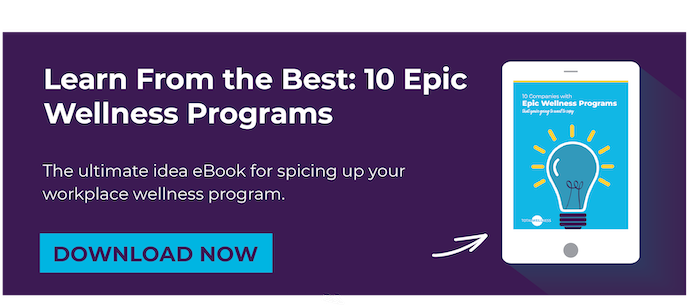A significant percentage of the U.S. workforce grapples with chronic pain. According to a study by the Centers for Disease Control and Prevention (CDC), nearly 1 in 6 (or 15%) of American workers live with long-term pain. This means that chronic pain most likely affects some of your employees – and you may not even know it.

According to MedicineNet.com, chronic pain is described as an unpleasant sense of discomfort that persists or progresses over a long period. In contrast to acute pain – which arises suddenly in response to a specific injury and is usually treatable – chronic pain persists over time and is often resistant to medical treatments.
Chronic pain can start with or without an apparent cause. In most situations, chronic pain begins after an injury, surgery, or illness. But for others, there might not be an obvious cause. Chronic pain can range from mild to severe, and in a lot of cases, it can cause many unpleasant symptoms other than pain.
According to WebMD, some symptoms of chronic pain can include:
- Feeling very tired or wiped out
- Loss of appetite
- Trouble sleeping
- Mood changes
- Weakness
- A lack of energy
Chronic pain can also negatively impact mental and emotional health. Employees living with chronic pain have a higher risk of developing depression. Research suggests that anywhere from 30 to 50% of people with chronic pain also struggle with depression or anxiety.
Because chronic pain can affect an employee’s work performance and job satisfaction, it’s important that chronic pain is addressed and accommodated at your company. The following are some tips for employers to help support employees living with chronic pain:
Spread education and awareness.
The stigma of chronic pain can cause a lot of misconceptions in the workplace. For example, many uneducated employees might believe that chronic pain is always considered a disability, or that everyone with chronic pain misuses opioids. These types of misconceptions can make it difficult for employees with chronic pain to feel comfortable and supported in their workplace.
It’s essential that employers work to educate themselves and their employees about chronic pain. There are plenty of free, educational resources available online that can be printed out or emailed to employees. It might also be helpful to bring in a healthcare professional with experience in chronic pain to host a lunch-and-learn session or a lecture at your office. Spreading education and awareness in the workplace will help employees living with chronic pain feel more supported and understood – as well as help fight the stigma of chronic pain.
Evaluate the physical work environment.
There are many aspects of the physical work environment that can either negatively or positively impact employee comfort. To help create a space that is supportive of employees with chronic pain, employers should:
- Designate quiet areas. Utilize an empty office space or conference room to be a designated quiet area. Employees with chronic pain can use this room to take a break from their desks and recharge if they are experiencing symptoms.
- Rethink traditional cubicles. Being hunched over in a chair all day is terrible for the body. Consider investing in ergonomic chairs and standing desks to help employees feel more comfortable in their workspace and stretch more throughout the day.
- Invest in quality equipment. If your workers are responsible for more physical duties, be sure that they have the proper equipment that they need. This will help reduce the risk of further aggravating chronic pain.
Encourage regular breaks.
One way to support employees with chronic pain is to allow and encourage regular breaks throughout the workday. As we mentioned earlier, sitting at a desk all day is terrible for overall health – and it can be even more harmful for those with chronic pain. Aches and pains can be further aggravated when the body is forced into a sitting position for eight hours. Allow employees (especially those with chronic pain) to get up from their desks and move periodically throughout the day. Even a five-minute walking break every hour or so will help make a difference.
Offer opportunities for stress relief.
Dealing with chronic pain can be stressful. Besides taking its toll on an employee’s mental and emotional health, chronic pain can be a financial burden, too. A 2011 study estimated that the annual cost of pain was between $560 billion and $635 billion. This added stress can make symptoms even worse and make it difficult to concentrate at work. Provide stress-relief activities at work like on-site chair massages, walking clubs, meditation groups, or on-site yoga.
Let employees know you support them.
Many employees choose not to disclose their chronic pain to employers due to the fear that their ability to perform might be scrutinized. Keep open communication with employees to let them know that they are supported and that you are there to help them with whatever they might need. While not all employees with chronic pain require special accommodations in the workplace, be sure work with them to determine if there is any way to make their job easier for them.
Offer discounts on professional services.
For employees that deal with less severe forms of chronic pain, services such as massages, acupuncture, therapeutic yoga, and other holistic services can help ease symptoms. Mindfulness and meditation classes can be helpful, too. Offer employees discounts or coupons for these types of services. These discounts can also be earned as an incentive for completing steps in your workplace wellness program.
Maintain a flexible work environment.
Flexible hours and schedules can help employees with chronic pain perform their best at work. Allow employees to work from home as needed or work flexible hours when symptoms flare up.
Unfortunately, chronic pain is a reality for many employees. When chronic pain isn’t supported in the workplace, it can negatively impact job performance and satisfaction. Try out some of above tips to help support employees living with chronic pain at your workplace.
Do you live with chronic pain? What advice do you have for employers? Feel free to share in the comment section below.
Like this blog post? Share it with your employees or co-workers with this printable version of the blog!
Image created by Freepik



